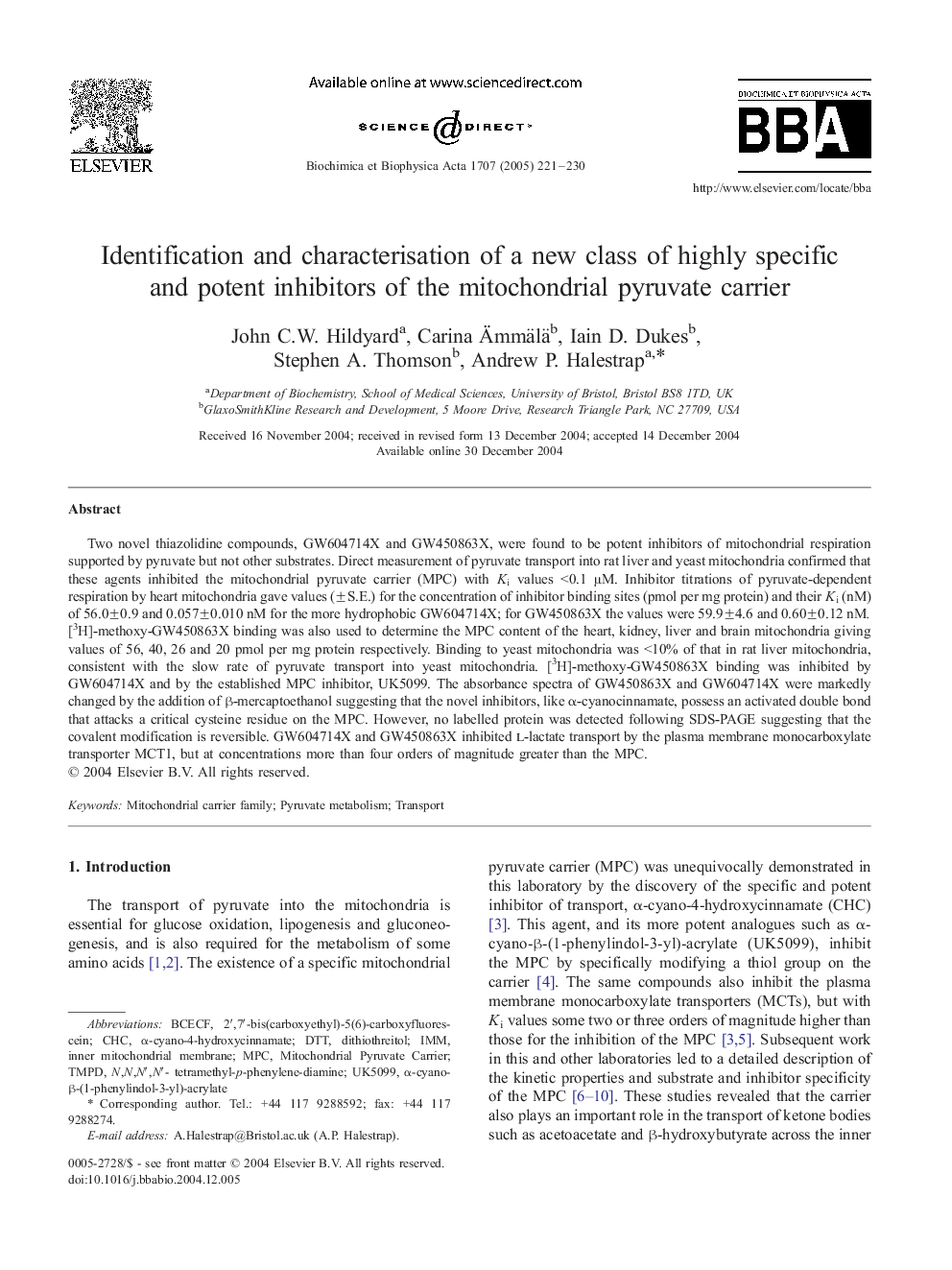| Article ID | Journal | Published Year | Pages | File Type |
|---|---|---|---|---|
| 9884697 | Biochimica et Biophysica Acta (BBA) - Bioenergetics | 2005 | 10 Pages |
Abstract
Two novel thiazolidine compounds, GW604714X and GW450863X, were found to be potent inhibitors of mitochondrial respiration supported by pyruvate but not other substrates. Direct measurement of pyruvate transport into rat liver and yeast mitochondria confirmed that these agents inhibited the mitochondrial pyruvate carrier (MPC) with Ki values <0.1 μM. Inhibitor titrations of pyruvate-dependent respiration by heart mitochondria gave values (±S.E.) for the concentration of inhibitor binding sites (pmol per mg protein) and their Ki (nM) of 56.0±0.9 and 0.057±0.010 nM for the more hydrophobic GW604714X; for GW450863X the values were 59.9±4.6 and 0.60±0.12 nM. [3H]-methoxy-GW450863X binding was also used to determine the MPC content of the heart, kidney, liver and brain mitochondria giving values of 56, 40, 26 and 20 pmol per mg protein respectively. Binding to yeast mitochondria was <10% of that in rat liver mitochondria, consistent with the slow rate of pyruvate transport into yeast mitochondria. [3H]-methoxy-GW450863X binding was inhibited by GW604714X and by the established MPC inhibitor, UK5099. The absorbance spectra of GW450863X and GW604714X were markedly changed by the addition of β-mercaptoethanol suggesting that the novel inhibitors, like α-cyanocinnamate, possess an activated double bond that attacks a critical cysteine residue on the MPC. However, no labelled protein was detected following SDS-PAGE suggesting that the covalent modification is reversible. GW604714X and GW450863X inhibited l-lactate transport by the plasma membrane monocarboxylate transporter MCT1, but at concentrations more than four orders of magnitude greater than the MPC.
Keywords
Related Topics
Life Sciences
Agricultural and Biological Sciences
Plant Science
Authors
John C.W. Hildyard, Carina Ãmmälä, Iain D. Dukes, Stephen A. Thomson, Andrew P. Halestrap,
